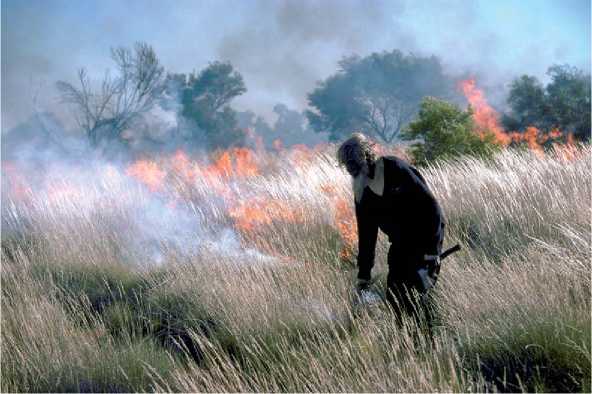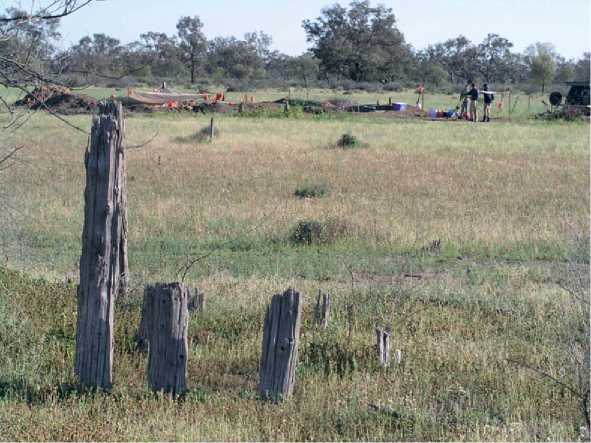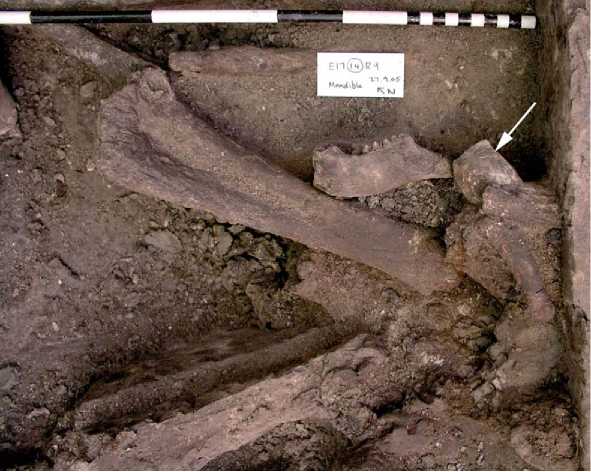A popular and vigorous debate has waxed and waned over the years in relation to the timing and causes of megafaunal extinctions in Australia. The megafauna are mostly classified as animals in excess of 40 kg that disappeared towards the close of the Pleistocene period. They included a number of marsupial giants the largest of which - the Diprotodon - weighed in at approximately 2.7 tonnes; the giant flightless bird, Genyornis; the giant goanna, Megalania and a range of giant kangaroos, and wallabies. However, there are a number of now extinct species that weighed in at considerably less than 40 kg. Those species that did not become extinct underwent phy-letic dwarfing and their modern day representatives are in some cases considerably smaller than their Pleistocene relatives.
The main contenders in the extinction debate have always been people and/or climate. Blitzkreig, first developed by Paul Martin for North America and developed for the Australian context by Tim Flannery, provided a neat explanation which laid the blame squarely at the feet of Aboriginal people - specialized hunters who swept across the continent killing off the naive giants. A second human-mediated extinction explanation lies with ecosystem disruption through landscape burning and hunting pressure - effectively delivering the same outcome (Figure 5). Either way, these events are argued to have resulted in a terminal extinction date for megafauna in Australia of 46.5 ka. A third model deals with the large-scale effects of climate change, the resultant loss of freestanding water and the physiological implications of increasing aridity and reconfiguration of habitat. The latter was first proposed by David Horton for the Australian context and revisited in recent years by the author and colleagues Stephen Wroe and Richard Fullagar. It was not until recently that significant headway was made into elucidating the chronologies and consequently timing of the extinction event. Significantly, there is little evidence for the coexistence of megafauna with people, the site of Cuddie Springs in southeastern Australia, and Nombe Rockshelter in the New Guinea highlands providing the only secure evidence of an association of humans (stone artifacts) and megafauna (fossil remains). While a couple of younger sites are known where fragmented remains of megafauna are found, these are derived from culturally sterile horizons. For the Australian mainland, the Cuddie Springs site provides clear evidence of a significant temporal overlap of humans and a few species

Figure 5 Senior Martutjarra man burning heavy spinifex, Great Sandy Desert, July 1996. Photograph © M. A. Smith.

Figures TheCuddie Springs claypan, at the center of which is preserved a long fossil record, the upper horizons of which co-occur with an archaeological record and dates to c. 36 ka. Photograph © Judith Field.
Of megafauna. The Cuddie Springs site (Figure 6) is critical to our understanding of the potential associations and interaction of humans and megafauna as it lies within the modern semi-arid zone but was within the arid zone during the Late Pleistocene. It is an ancient ephemeral lake within which is found a stratified sequence containing a fossil faunal record that extends back over hundreds of thousands of years. In the upper horizons these fossil fauna, including some species of megafauna, co-occur with an archaeological record which begins around 36 ka. The archaeological record opens when the environs were dominated by chenopod shrubland and the lake was in an extended wet phase. Low concentrations of flaked stone artifacts are found amongst the mostly complete bones of
A range of megafauna (Figure 7). The faunal remains from the lowest archaeological horizon (Stratigraphic Unit 6B) are predominantly the giant flightless bird Genyornis newtoni, which was similar in size to the modern emu though much more robust. Isotope studies identify Genyornis as a browsing feeder - a common feature of the extinct suite of fauna from this period. Higher up the Cuddie Springs sequence (Stratigraphic Unit 6A), the environment changes to open grasslands, the number of megafauna is reduced, the proportion of extant fauna increases and grindstones are documented for the first time, dating from c. 30 ka. Significantly, only a handful of megafauna species has been documented in these horizons. The evidence indicates late survival of some species of megafauna

Figure 7 The lower limbs bones of G. newtoni(at left) and a macropod mandible in association with aflaked stone artifact (arrow) in the lake sediments at Cuddie Springs. Photograph © Judith Field.
Though it is a depauperate suite compared to the documented range of species known from Australia (>60 species).
A recent review of the currently available datasets has shown that 65% of megafauna in Australia may have disappeared prior to the arrival of people. The decline initially occurred during the penultimate Glacial Maximum between 130 and 150 ka. By the time people arrived, c. 43-45ka, only 13% (c. 8) of the known megafauna species remained. The trend to aridification of the continent that had begun some hundreds of thousands of years previously, perhaps the added hunting pressure of a new predator, and increasing uncertainty in climate in the lead-up to the LGM may have combined to see the last of the megafauna disappear. Some of the smaller species may have survived the LGM only to become extinct by c. 16 ka.
Interestingly, despite intensive archaeological investigations in Tasmania there is no evidence that megafauna were extant here when humans arrived and, on the mainland, only one site provides the archaeological evidence which demonstrates coexistence with people. Claims for human-mediated extinctions of Genyornis in the Lake Eyre basin in southern Australia, do so in the absence of any evidence for the presence of people at that time, or palaeoenvironmental data indicating vegetation change and/or fire activity.
The explanatory hypotheses for the extinction of the megafauna in Australia all suffer the same problem - the thin datasets that are currently available. However, viewing the fossil record over the longer time scale has now provided a perspective which appears to exonerate people as the primary mover in these events, indicating instead a complex palaeoeco-logical problem. Whatever happened, there is mounting evidence that the activities of people were only a footnote to the large-scale processes in train long before humans set foot in Sahul.




 World History
World History








